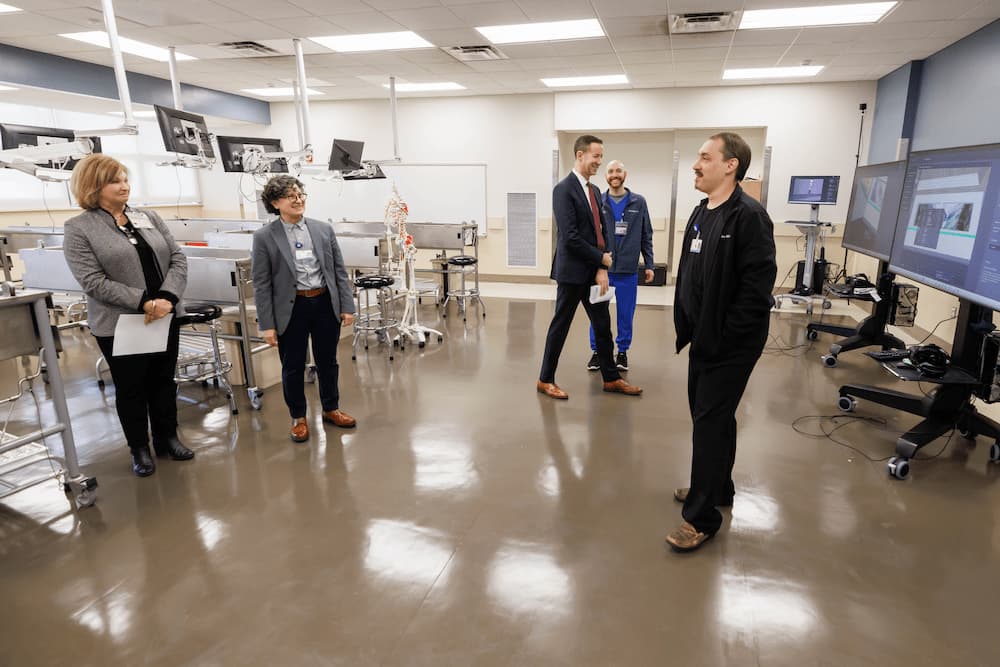The Department of Advanced Biomedical Education's Open House

The Department of Advanced Biomedical Education (DABE) hosted an Open House on January 12, 2024, to showcase its newly renovated space and some immersive technology tools used in biomedical education. These renovations include 2,664 sq ft which is divided into three parts. The first section comprises 800 sq ft of individual study cubicles each with computers, desks, and seating. The second section, the collaboration area, is the largest of the three with over 1000 sq ft. The collaboration area is an open seating concept with movable tables and chairs and a kitchenette. The third area provides individual offices each with a computer, desk, and guest seating along with storage areas. In addition, the Department is adding stations utilizing immersive technology with Virtual Reality, Extended Reality, and 3D visualization.
DABE faculty are excited about the space and the educational and research activities that these improvements will help to facilitate. The individual cubicles will serve as a touchdown space for faculty members engaging in education and research activities. Dr. Norma Ojeda, Chair of DABE, described the collaboration area as a multipurpose collaborative space that will facilitate collaborations in designing instruction, instructional materials, and research among DABE faculty and faculty in other departments and invited guests. Five offices for faculty are available for faculty engaged in educational activities that require that they are in close proximity to the education facilities in that part of campus including the anatomy lab. The addition of immersive technologies is expanding the teaching approaches by utilizing virtual anatomical specimens integrated with simulations and clinical vignettes. There are three stations utilizing Virtual Reality and one station utilizing Extended Reality, located in the Gross Anatomy Laboratory, one station of 3D Visualization in the anatomical visualization laboratory, one mobile station of 3D Visualization for the SOM classroom, and one station of Virtual Reality in the Simulation Center.
The renovations were funded by Improved Primary Care for the Rural Community through Medical Education (IMPACT the RACE) to increase and support educational activities for medical students. IMPACT the RACE is supported by the Health Resources and Services Administration (HRSA) of the U.S. Department of Health and Human Services (HHS) as part of an award. The immersive technology tools were supported by anonymous sponsors providing the resources for implementing the use of Virtual Reality and Extended Reality in the learning process.


